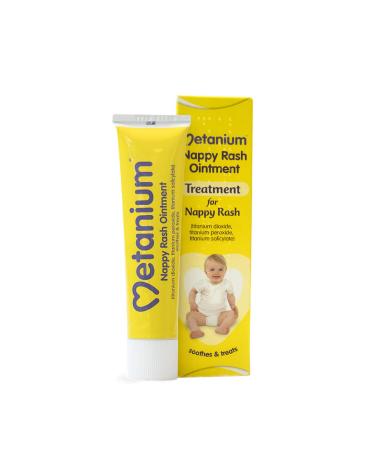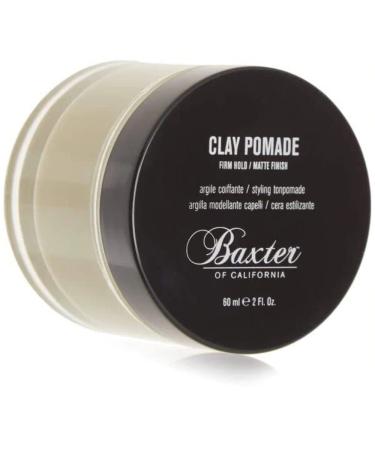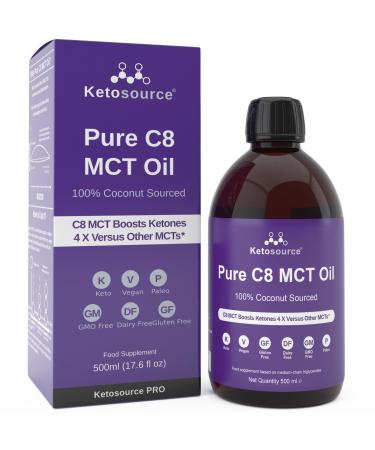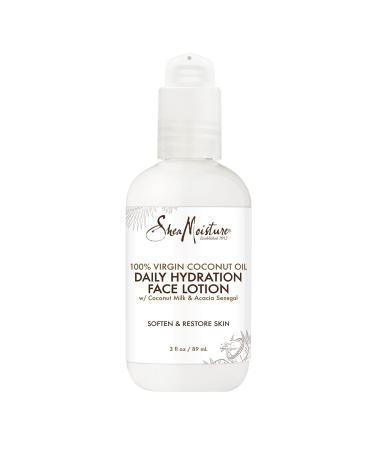-Alcohol-free liquid propolis
-propolis extract
Therapeutic properties of propolis
Pharmacological activities of some compounds in propolis
The most important pharmacologically active compounds in propolis are flavonoids, various phenolics, and aromatics.
FlavonoidsAntimicrobial properties (Ghisalberti, 1979), antipyretic (Ravina, 1969), antioxidative, reduces capillary permeability (Szent-Györgyi, 1936), antihemorrhage.
Krizintumor cellular toxicity (Hladon et al., 1987), anti-Helicobacter pylori (Itoh et al., 1994)
Apigeninhealing of gastric ulcers (the hive and the honeybee, 1992)
Acacetinantipyretic (Bankova et al., 1983)
Kaempferidespasmolytic (The hive and the honeybee, 1992),
Anti-Mycobacterium phlei, against acid resistance of microorganisms
Ermaninanti-mycotic
Galanginbacteriostatic activity (Villanueva et al., 1964 Pepeljnjak, 1982), anti-Microbial and anti-Mycotic (Metzner et al., 1979), anti-Helicobacter pylori (Itoh et al., 1994)
Pinochembrinbacteriostatic activity (villanueva et al., 1970), anti-Mold (miyakado et al., 1976), anti-Blastomycetes (metzner et al., 1977), anti-Microbial and anti-Mycotic, in vitro and external use (metzner at al., 1979), anti-Candida (metzner and schneidewind, 1978), local anaesthetic (Paintz and Metzner, 1979), anti-Helicobacter pylori (Itoh et al., 1994)
Pinobanksinanti-Microbial and anti-Mycotic (metzner at al., 1979)
Pinostrobinlocal anaesthetic (paintz and metzner, 1979)
Dihydroxyflavonoidsstrengthening capillaries (the hive and the honey bee, 1992)
Pectolinaringeninspasmolytic (The hive and the honeybee, 1992)
LuteolinAnti-Viral (König and Dustmann, 1985), healing of gastric ulcers (The hive and the honeybee, 1992)
ArtepillinCAnti-Tumoral effect
Eriodictyolheart Failure improving effect, acute heart failure preventive effect
FerulicAcidAntibacterial effect (gram-positive and gram-negative microorganisms) (villanueva et al., 1970 Cizmarik and Matel, ), agglutinant effect, collagenic effect
IsoferulicAcidAnti-Staphylococcus aureus
BenzoicAcidBacteriostatic and bactericidal effect (Janes and Bumba, 1978), balsamic and antiseptic (Vanhaelen and Vanhaelen-Fastre, 1992)
CinnamicAcidanti-Staphyloccocus aureus isopentyl ferulate anti-Influenza virus A Hong Kong (H3N2) in vitro, inhibition of hemagglutinin production in vivo
CaffeicAcidanti-viral (Konig and Dustmann, 1985), anti-bacterial activity against some Gram-positive and Gram-negative microorganisms (Villanuueva et al. al., 1970 Cizmarik and Matel, 1970, 1973), antipyretic (Bankova et al., 1983), antitumoral activity.
PropolisHumanHealthForImportance
Propolis stimulates the immune system, increasing the body's natural resistance against diseases and strengthening the body.
Its main effects include antiseptic (eliminating germs), antimycotic (against fungi), bacteriostatic (inhibiting bacterial growth), Its properties include spasmolytic (muscle relaxant), anti-inflammatory (anti-inflammatory), anesthetic (reducing nerve sensitivity), and antioxidant (preventing oxidation or molecular deterioration).
Propolis is also beneficial in wound healing and tissue regeneration. It is used in the treatment of burns, neurodermatitis, leg ulcers, psoriasis, and genital disorders.
It is also used as a treatment for rheumatism and sprained joints, as a mouthwash, as a toothpaste, and for treating mouth infections and gum disease.
It is used in cosmetic products and medications (e.g., facial creams and lotions), and as a cleaning agent between teeth. It is used in the production of waxed yarn.
PropolisTherapeuticTherapeuticProperties
Due to its strong antimicrobial activity, propolis is a natural antibiotic.
Propolis has high antimicrobial properties.
Propolis has inhibitory effects on 21 species of bacteria, 9 species of fungi, 3 species of protozoa, and a wide range of viruses.
In addition to these, propolis also has extensive therapeutic properties:
– anticancer effect,
– antioxidant effect,
– wound closure and tissue repair effects,
– digestive system effects,
– skin infection effects,
– anti-inflammatory effect,
-anesthetic effect,
-immune system effects,
-cardiovascular system effects,
-dental health effects.
Due to the high level of flavonoids in propolis, this product acts as a scavenger against oxygen radicals in humans.
Also interestingly, it prevents vitamin C from being damaged by oxidation.
Contamination andShort shelf lifeIt does not have problems such as.
This is due to the antioxidant and antimicrobial properties of propolis.
CompoundEffects(synergisticEffect)
Most studies on the therapeutic properties of propolis have focused on its phenolic compounds (phenolic compounds such as flavonoids and caffeic acid esters).
Research is focused on isolating the active ingredient contained in propolis and testing its effects. However, due to the numerous components in propolis, the combined effect is greater than the sum of the effects of each component alone.
Studies have shown that the flavonoids found in propolis have effective antibacterial activity, but isolated flavonoids exhibited lower activity than propolis extract.
Propolis has been observed to have a combined effect with some antibiotics. In some cases, its effects on bacteria and yeast were increased 100-fold. It has been concluded that antibiotics taken in conjunction with propolis break down this resistance in antibiotic-resistant staphylococcus strains.
Anticancer effects
Propolis extract has been found to transform and prevent the growth of cancer cells in the liver and bladder. The substances that provide this cell-killing effect are quercetin, caffeic acid, and clerodane diterpenoid isolated from propolis.
Clerodane diterpenoid exhibits selective lethal activity against tumor cells. It also has lethal activity on human and animal tumor cell cultures, such as breast, skin, colon, and kidney cancer cells. The compound responsible for these effects is caffeic acid phenethyl ester.
Artepillin c isolated from propolis has been shown to inhibit human stomach cancer cells, It has a cell-killing effect on human laryngeal cancer cells and mouse colon cancer cells.
Caffeic acid esters have also been found to chemically inhibit tumor formation in mice. This effect occurs through selective toxicity on genes that drive the development of cancer cells.
Antioxidant Effects
Flavonoids, abundant in propolis, are very powerful antioxidants.
Antioxidants have the ability to scavenge (sequester) free radicals, thus protecting lipids and preventing the oxidation and destruction of other compounds such as vitamin C.
Active free radicals, along with other factors, are responsible for cell aging in cardiovascular diseases, rheumatism, cancer, diabetes, Parkinson's, and Alzheimer's diseases. Oxidative damage leads to decreased liver function.
Experiments on rats showed that propolis extract protects liver cells from damage.
Wound healing and tissue repair effects
Propolis has been observed to stimulate various enzyme systems, cell metabolism, circulation, and collagen formation, contributing to the healing of burn wounds.
These effects are due to the arginine contained in propolis.
Effects on the Digestive System
This effect was shown to prevent stomach ulcers in rats. This effect is due to the flavonoid components of propolis.
Effects on Skin Diseases
Propolis has been found to effectively inhibit yeasts and fungi responsible for skin diseases such as ringworm and athlete's foot. The propolis components that act against these organisms are flavonoids and caffeic acid derivatives.
Pain-relieving effects
Propolis extract has properties comparable to the widely used painkiller indomethacin. Flavonoids and caffeic acid also play a role in pain reduction.
Anesthetic effects
Propolis and some of its components exhibit anesthetic effects. Experiments on rabbit corneas have shown that propolis has an anesthetic effect 3-10 times stronger than cocaine and 52 times stronger than procaine. It has been established.
The anesthetic effect is known to be achieved through the pinocembrin, pinostrobin, and caffeic acid esters in propolis. This anesthetic effect explains why propolis has been used for centuries to treat sore throats and mouth sores.
The use of propolis as an anesthetic in dentistry has been patented in Europe.
Effects on the Immune System
Another property of propolis is its immune-boosting properties. Propolis is a natural, broad-spectrum antibiotic that activates glands.
Experiments on mice have shown that propolis stimulates the immune system. Recently, Japanese researchers have shown that propolis extract activates macrophages in humans, depending on immune functions.
These results greatly help explain the anti-tumor effect of propolis. One study found that antibody-producing spleen cells in mice produced three times more antibodies than control cells. The effect was further enhanced after the second dose, administered 24 hours later, but the effect diminished with subsequent doses.
Propolis has also been found to inhibit HIV-1 replication (the AIDS virus) and regulate immune responses.
Propolis is an anti-HIV-1 and immune-stimulating agent. It is a non-toxic natural product with system-regulating effects.
Effects on dental protection
In a study conducted on rats against sobrinus bacteria, which causes tooth decay, more than half of the patients were observed to have a reduction in tooth decay when given propolis extract mixed with water. During the experimental study, propolis extract was found to have no toxic effects on the development of the rats. Furthermore, propolis was effective as an adjunct in gingivitis and plaque formation. A 50 propolis extract was also found to have an antiseptic effect on dental caries. Furthermore, propolis is known to inhibit the survival of numerous bacterial organisms that inhabit the mouth.
Cardiovascular effects
Concentrated propolis extract has been shown to lower blood pressure, produce a calming effect, and promote serum glucose production. The dihydroflavonoids found in propolis have been shown to strengthen capillaries and exhibit antihyperlipidemic activity. Furthermore, in rats, propolis has been shown to protect the liver against alcohol and tetrachloride.
Viral and skin infections
Clinical trials have shown that it has a protective effect against influenza in humans. Patients who used propolis for the common cold recovered completely within 3 days, while this period was extended to 5 days in patients who did not use propolis.
Clinical trials in patients with skin diseases have shown that propolis cream It was observed to have significant therapeutic properties against herpes zoster type 1 and herpes zoster viruses. Propolis cream reduced the duration of sores and pain, and also shortened the interval between sores.
Skin Infections
Clinical applications of propolis (1–10 ) have shown effectiveness against 10 superficial fungi and 9 deep-growing fungi. 160 psoriasis patients were given 0.3 g of propolis three times a day for 3 months, and one-third were found to have improved or completely disappeared. 110 psoriasis patients were treated with 50 propolis ointment, and excellent results were achieved in 97 of the patients.
Dental Applications
The effects of propolis on plaque formation and gingivitis were studied, and 60 students were divided into groups.
The results indicated that propolis is beneficial as an adjunct to oral hygiene. Clinical studies have shown that propolis mouthwash (diluted 1:5 with water) provides significant improvement in gingival bleeding and periodontal disease.
Patients were evaluated for plaque formation and gingival pain.
Wound healing and tissue regeneration
64 patients aged 23–98 with typical open wounds were administered propolis. Ointments containing propolis were applied daily to the wound area, and antibiotic ointments were also applied around the wound. Significant improvements were observed in patients after 4–12 weeks of this application. When propolis was applied to patients with infected wounds, it was observed that the rate of healing increased and the infection decreased. Studies on the effects of propolis on wounds and burns showed an 80 increase in healing rate compared to control subjects. Creams containing 2 and 8 propolis were applied to 229 patients with burns, clean wounds, and infected wounds. The low-concentration cream applied to wounds and burns showed a healing effect in an average of 11 days, in infected wounds in 11 days, and in 67 of infected wounds in an average of 38 days.
Ear infections
propolis solutions were tested on 126 patients suffering from inner ear infections, outer ear infections, and similar ear disorders. Propolis has been reported to have a healing effect on all ailments (Matel et al. 1973). Propolis also demonstrated a positive effect on acute ear disorders.
Digestive system disorders
10-20 propolis extract was administered to 138 patients suffering from intestinal parasites. Low doses were observed to have a therapeutic effect in children. In adults, a 20 propolis extract was found to be as effective as tinidazole and antiprotozoan drugs at a dose similar to that of propolis. Propolis has been tested on ulcer and Crohn's disease patients in Denmark. It was found to be effective on ulcers but not on Crohn's disease.
Immune system disorders
A combination of propolis, esberitox n, and calcium-magnesium was administered to two patients with immune system disorders, and positive improvements were observed in their immune systems and clinical condition. In a 2002 study conducted by Orsolic et al. on breast cancer using a water-soluble propolis derivative (wsdp), propolis administration was observed to reduce tumor formation in mice treated with cancer cells. They suggested that this occurs by increasing the activity of immune cells, in other words, by increasing antitumor resistance.
Inflammation
22 patients with aseptic necrosis were regularly injected with propolis, while 32 patients received standard treatment under the same conditions. Significant improvements were observed in the patients treated with propolis compared to the others. A 3 propolis ethanol extract was administered to 90 patients suffering from vaginal and uterine inflammation, and positive improvements were observed in more than 50 of them.
Circulatory system disorders
At Lian Yun Gang's Workers' Hospital in China, Dr. Fang Zhu selected 45 patients with hypertension, atherosclerosis, and coronary heart disease and gave them 300 mg of propolis three times a day for 30 days. After this period, significant decreases in the patients' cholesterol levels were observed.
Hormonal system disorders
Another benefit of propolis is that it eliminates prostaglandins, which block enzymes. Pain and fever caused by prostaglandins were eliminated by propolis. Propolis blocks the same enzymes as aspirin, but it does not have the same side effects. Propolis' enzyme-blocking and prostaglandin-inhibiting effects are also beneficial for the mouth and throat. For example, bleeding gums and tissue damage are among the biggest problems in oral health. Inflammation and bleeding can lead to weakened tooth structure and tooth loss. However, by blocking specific enzymes, propolis inhibits prostaglandin production, preventing inflammation and bleeding gums.
Protein Metabolism Disorders
Another benefit of propolis is its ability to regulate protein metabolism. Physicists from the Sarajevo Radiology Institute studied certain proteins in patients receiving radiation. These patients had liver disease due to irregular protein metabolism or exposure to X-rays. These patients were given propolis for two months. The other group was given a placebo. After two months, most patients given propolis showed improvement. No improvement was observed in patients given a placebo.
Conclusion
In today's world where antibiotics are losing their effectiveness, bee products are the best natural defense method protecting people against various diseases.
In addition to using bee products individually, it has been reported that mixing them in specific proportions is more beneficial and can be used in conjunction with medical treatment methods to solve any health problem.
In this respect, bee products should be viewed as a supplement to medicine, not an alternative.
Instructions for Use
Apideva Propolis 30 ml
Please read this instruction leaflet carefully before using this product. It contains important information for you.
-Keep this instruction leaflet. You may need it again later.
-If you have any further questions, please consult your doctor or pharmacist.
-This supplement has been personally prescribed for you do not give it to others.
-Do not use higher or lower doses of this product than the recommended dose.
Active ingredient: sterile water, propolis extract (0)
Things to consider before using propolis
If you are allergic to bees or bee products
If you are in the last trimester of pregnancy, consult your doctor before using propolis.
How to use propolis
Extensive R D, analysis, and application studies are being conducted in scientific resources on the use of propolis, and the general consensus is that as a dietary supplement, the recommended dose is 20 drops for adults and 10 drops for children. The instructions for use for those who are not allergic to bee products are detailed below:
Use as a gargle
For bad breath, dental plaque, decay-related problems, or simply for dental hygiene, mix one teaspoon of Madeva white propolis with one teaspoon of warm water. Gargle for a few minutes morning and evening before swallowing (allergic patients are advised not to swallow).
Ingestion
For adults:20 drops can be mixed with water twice a day (on an empty stomach in the morning and on a full stomach in the evening). In cases of illness, the dose can be increased up to four times.
For children:10 drops of Madeva white propolis can be added to half a glass of water and taken twice a day (on an empty stomach in the evening and on a full stomach in the morning). This dosage should be taken with a doctor's advice, taking into account children's allergies.
Use for cleaning external wounds and skin
For wounds, burns, frostbite, injuries, and eye burns, apply a sufficient amount of Madeva white propolis to a napkin or clean cotton cloth and apply it to the wound for half an hour twice a day.
Use for cleaning ear infections
It is recommended to apply Madeva white propolis, dropped into a Q-tip, to the ear three times a day.
Side Effects of Propolis
There is no evidence that propolis has any side effects. However, people with allergies should be careful when using it. If you experience headaches, redness on the hands and body, itching, nausea, or skin rashes, it is recommended to go to the nearest healthcare facility. These may be signs of an allergy.
Storage Conditions for Propolis
Store in the refrigerator ( 2, 6 C) or in a cool, dry environment. After opening, be sure to store in the refrigerator ( 2, 6 C). Do not purchase packages with the lid opened.













